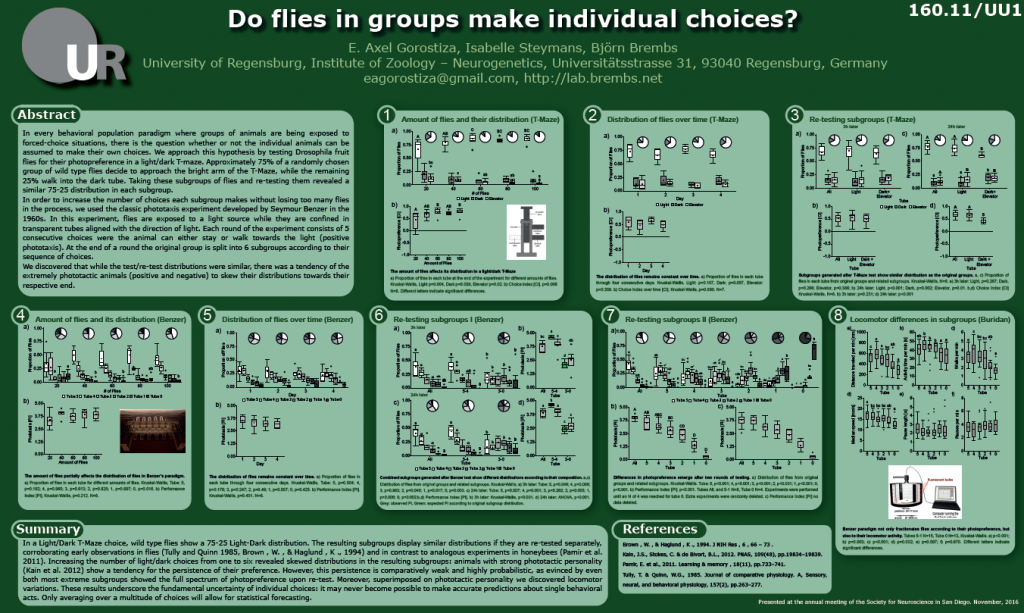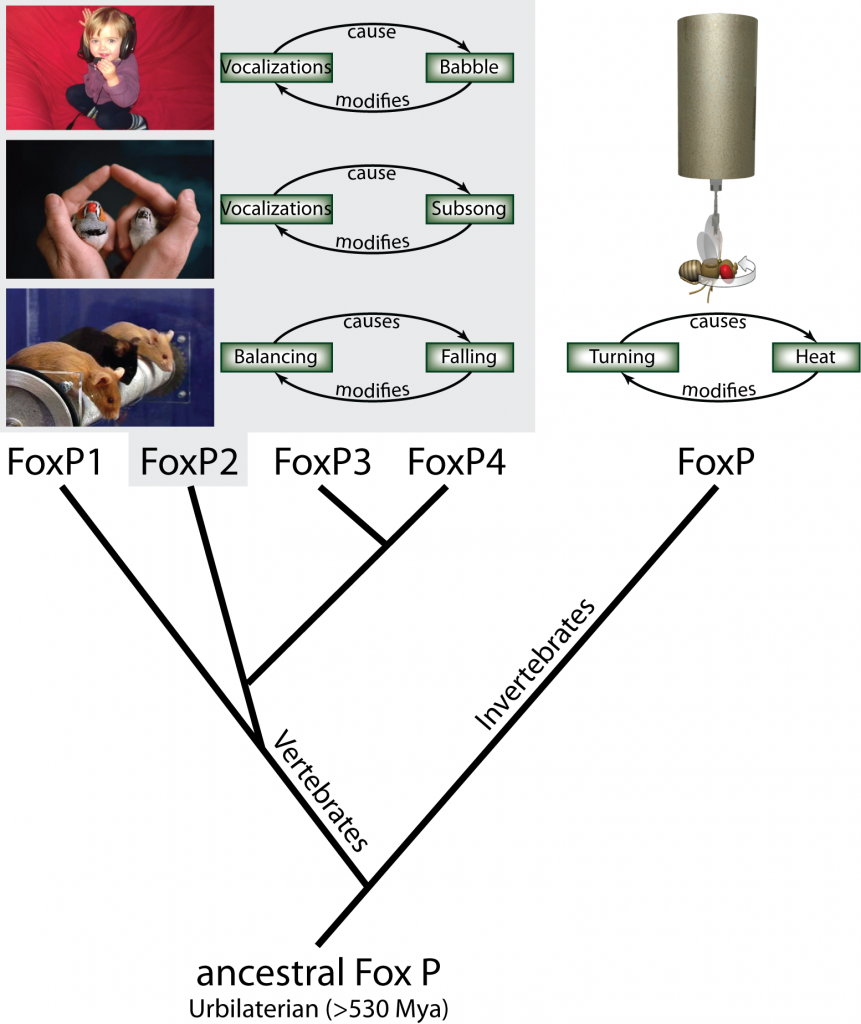For the last few years, we have been working on the development of new Drosophila flight simulators. Now, finally, we are reaching a stage where we are starting to think about how to store the data we’ll be capturing both with Open Science in mind, but particularly keeping in mind that this will likely be the final major overhaul of this kind of data until I retire in 20 years.
Rogue Scholar Beiträge

Few insect behaviors are more iconic than the proverbial moths circling the lamps at night. Artist: Dave McKean These observations are prime examples of the supposedly stereotypic insect responses to external stimuli. In contrast, in our new paper that just appeared today, we describe experiments suggesting that insects appear to make a value-based decision before approaching the light.

This is our first poster at this year’s SfN meeting in San Diego. It’s about decision-making in fruit flies. We find a probabilistic form of decision-making that suggests that without understanding the mechanisms behind this fundamental uncertainty, we will never fully understand decision-making. Clicking on the image will let you download the PDF Version of the poster.
This is a post written jointly by Nelson Lau from Brandeis and me, Björn Brembs. In contrast to Nelson’s guest post, which focused on the open data aspect of our collaboration, this one describes the science behind our paper and a second one by Nelson, which just appeared in PLoS Genetics. Laboratories around the world are generating a tsunami of deep-sequencing data from nearly every organism, past and present.
For our course this year I was planning a standard neurogenetic experiment. I hadn’t ever done this experiment in a course, yet, just two weeks ago I tried it once myself, with an N=1. The students would get two groups of Drosophila fruit fly larvae, rovers and sitters (they wouldn’t know which was which). About ten larvae from each group would be placed on one of two yeast patches on an agar plate.
Today, our most recent paper got published, before traditional peer-review, at F1000 Research . The research is about how nominally identical fly stocks can behave completely differently even if tested by the same person in the same lab in the same test.

See this post with the associated press releases on brembs.net. The F orkhead B ox P2 (FOXP2) gene is well-known for its involvement in language disorders. We have discovered that a relative of this gene in fruit flies, dFoxP , is necessary for a type of learning called operant self-learning, which resembles some aspects of language learning.
Genetically Separable" href="https://www.slideshare.net/brembs/wcalb14" target="_blank">Pavlovian and Skinnerian Processes are Genetically Separable
In our new lab here in Regensburg, we are currently re-establishing the method of confocal microscopy. To start with, we used the fly lines which show a defect in the temporal structure of their spontaneous behavior (a project of one of our graduate students). this fly line uses two transgenic constructs (c105 and c232) to drive expression in specified neurons in the fly brain, i.e., the merged expression patterns of c105 and c232.